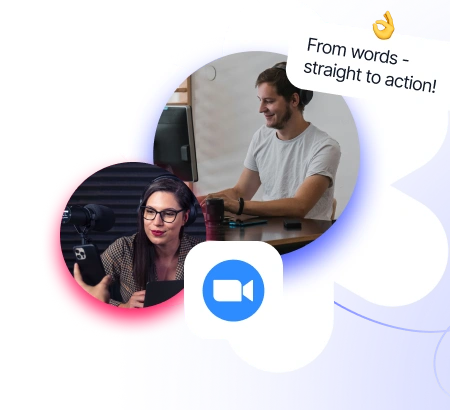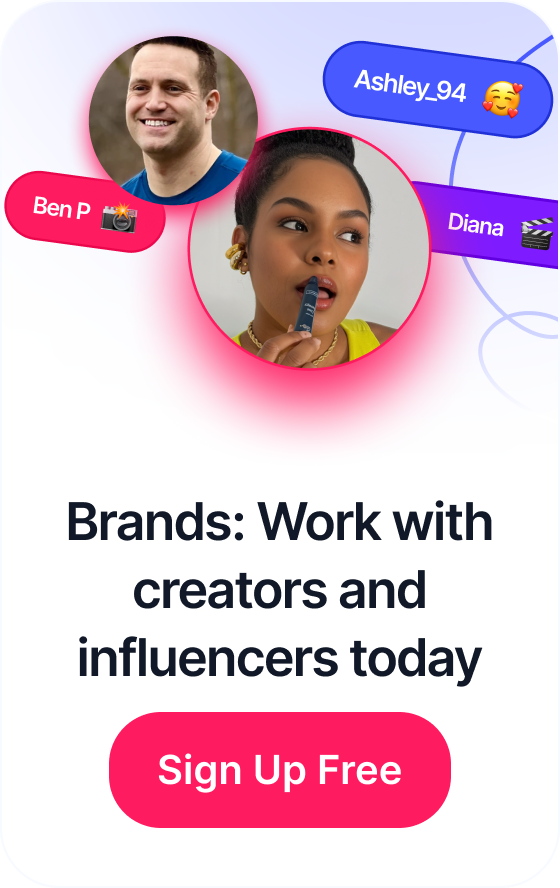 Ecommerce Content Strategy That Actually Drives Sales
Ecommerce Content Strategy That Actually Drives Sales
Table of Contents
Understanding the Real UGC vs AIGC Landscape

This screenshot paints a clear picture of the UGC market’s impressive rise. The projection of UGC comprising 78% of all online content by 2033 is a significant detail. It underscores a core element in the UGC vs AIGC debate: the undeniable demand for authentic content. This consumer preference shapes how we think about content strategy.
The growing presence of both user-generated content (UGC) and AI-generated content (AIGC) presents a nuanced challenge for marketers. AIGC offers efficiency and scale, while UGC cultivates trust and fosters community. It’s not a simple choice between one or the other.
Instead, brands need a considered approach, weighing their objectives, target audience, and budget. Think of a new product launch. The genuine excitement surrounding UGC can be invaluable. Conversely, a large-scale campaign might benefit from AIGC’s ability to generate content rapidly.
Navigating the Evolving Economics of Content
The financial side of content creation adds another layer to this discussion. The UGC market has seen substantial growth, exceeding $7.6 billion globally in 2025. That’s a 69% jump from the previous year. This surge is partly due to constrained marketing budgets and the growing appetite for authenticity. On average, brands spent $178 per UGC creator. This is often a small fraction of what they would pay traditional influencers. You can find more on these trends here.
However, the lower cost of UGC doesn’t mean you can skip strategic planning. Working with real creators requires an investment in relationships, quality control, and securing content rights. Developing a robust user-generated content strategy is a smart move. This involves setting clear guidelines, establishing approval workflows, and ensuring legal compliance.
On the AIGC side, you might have higher initial costs related to software or platforms like Jasper.ai or Copy.ai. However, the long-term scalability of AIGC can lead to significant cost efficiencies. Understanding the long-term financial implications of both approaches is crucial for a sustainable content strategy.
Let’s take a closer look at the market dynamics with a comparison table.
To illustrate the differing growth trajectories of UGC and AIGC, we’ve compiled the following table showcasing market values, growth rates, and projections.
UGC vs AIGC: Market Growth Comparison
| Content Type | 2024 Market Value | 2025 Market Value | Growth Rate | Projected 2027 Value |
|---|---|---|---|---|
| UGC | $4.5 Billion (estimated) | $7.6 Billion | 69% | $12.8 Billion (estimated) |
| AIGC | $1.2 Billion (estimated) | $2.0 Billion (estimated) | 67% (estimated) | $3.3 Billion (estimated) |
The table clearly shows the rapid expansion of both markets, with UGC currently holding a larger share. While AIGC exhibits strong growth, UGC maintains a significant lead, reflecting its established presence and the continuing demand for authentic content experiences. Projecting forward, both sectors are poised for substantial increases, but the dominance of UGC seems likely to persist.
When Real Creators Outperform AI Algorithms

This screenshot shows projected engagement across different platforms. It really highlights the effectiveness of authentic content. UGC’s strong performance on platforms like YouTube emphasizes the importance of genuine connection. This is a key consideration when comparing UGC with AI-generated content (AIGC) strategies.
AIGC offers efficiency, but human psychology favors authentic connections. Think about it: a friend’s recommendation carries more weight than a polished ad. This inherent trust fuels the power of UGC.
A customer demonstrating a product’s everyday use resonates more than a generic, AI-generated demo. Many leading brands are finding success with well-executed UGC campaigns as part of their marketing strategy.
The Engagement Gap: Why Authenticity Matters
Authenticity builds trust, and trust drives engagement. This is clear across social media, where UGC consistently outperforms branded content. Projected figures for 2025 indicate 70% higher engagement for UGC on Instagram compared to standard brand posts.
On TikTok, UGC performs 22% better than brand-created content. And on YouTube, UGC videos receive nearly ten times the views. This underscores a global trend favoring real stories.
The burgeoning creator economy, projected to reach $480 billion by 2027, reflects this shift. While AIGC offers scalability, engagement can lag, especially with younger audiences. 57% of this demographic prefers short-form, user-created videos. For more insights on these trends, check out this article.
Leveraging the Human Element
This doesn’t mean AIGC is irrelevant. Its ability to quickly generate consistent, personalized content remains valuable. However, understanding audience engagement is crucial.
Think of AIGC as a foundational tool, while UGC adds the authentic layer that truly connects. Brands should strategically use both, playing to each one’s strengths.
This means knowing when to prioritize authentic storytelling and when to prioritize efficient content production. By recognizing the human desire for genuine connection, brands can effectively navigate the UGC vs. AIGC landscape and build stronger relationships with their audience.
The Real Economics Behind UGC vs AIGC Decisions

This screenshot illustrates the decreasing cost of UGC (User-Generated Content), a key factor when comparing it to AIGC (AI-Generated Content). It highlights the changing financial landscape of content creation, offering both exciting possibilities and new challenges for brands. This dynamic environment requires a thoughtful strategy for budget allocation and creator partnerships.
Budget is often the first thing brands think about when weighing UGC against AIGC. While UGC may seem cheaper initially, a closer look reveals hidden expenses that can substantially affect your bottom line.
Unpacking the Costs of UGC
With UGC, these costs include:
- Creator payments
- Campaign management
- Content rights acquisition
- Quality control
You might also need to consider the cost of platforms like JoinBrands to simplify these processes.
Furthermore, nurturing relationships with real creators requires continuous investment. Think about the time involved in finding the right creators, negotiating agreements, and giving feedback. This administrative work, often underestimated, is a significant part of the true cost of UGC. For a more in-depth understanding of effective UGC strategies, check out our guide: Check out our guide on the benefits of user-generated content.
Calculating the True Cost of AIGC
AIGC has its own set of cost considerations. The initial investment in AI tools and platforms can be high. However, the potential for long-term savings through automation and increased output can be considerable. AIGC reduces the need for extensive creator management and can rapidly produce high volumes of content. As an alternative to hiring a virtual assistant, explore options to automate with Pin Generator.
Recent Pricing Trends: A Shift in the Landscape
A significant difference between UGC and AIGC appears when we look at recent pricing. In 2025, UGC creators charged an average of $198 for content, much lower than influencer rates across various platforms. This represented a 44% decrease from the previous year. More on this trend can be found here. This drop, driven by a larger pool of creators and the rising demand for budget-friendly content, presents both advantages and disadvantages for brands. While lower prices are appealing, they can also affect creator retention and the quality of the content produced.
To help you understand the cost implications of each strategy, we’ve prepared a detailed breakdown. The following table outlines the initial setup costs, ongoing expenses, and factors influencing return on investment for both UGC and AIGC.
| Cost Factor | UGC Investment | AIGC Investment | Time to ROI | Scalability Factor |
|---|---|---|---|---|
| Initial Setup | Moderate (Creator recruitment, platform fees) | High (Software licenses, platform subscriptions) | ||
| Ongoing Expenses | Moderate (Creator payments, campaign management) | Low (Software updates, minimal maintenance) | ||
| Creator Relationships | High (Ongoing nurturing and communication) | Low (Minimal interaction required) | ||
| Content Quality | Varies (Dependent on creator skill and brand guidance) | Consistent (Based on AI model capabilities) | ||
| Scalability | Moderate (Limited by creator availability and management capacity) | High (Easily automated and expanded) | ||
| Time to ROI | Faster (Direct impact of authentic content) | Slower (Requires initial investment and learning curve) |
As the table demonstrates, UGC and AIGC have distinct cost structures. UGC often involves higher ongoing expenses related to creator management and relationship building, but it can offer a quicker return on investment due to the authentic nature of the content. AIGC may require a higher upfront investment, but its scalability and automation potential lead to lower long-term costs.
Balancing Cost and Value in the Creator Economy
Making smart choices about UGC versus AIGC depends on a thorough understanding of the true costs. This includes not only the immediate expenses, but also the long-term investment needed for each method. Think about factors like creator partnerships, quality assurance, scalability, and the potential return on your investment. By carefully considering these elements, brands can create lasting content strategies that deliver both value and genuine connection.
Strategic Scenarios: When Each Approach Wins
The following infographic visualizes a decision tree for choosing between UGC and AIGC based on content requirements, prioritizing authenticity, speed requirements, and budget constraints.

The infographic clearly shows that while budget and speed often favor AIGC, the need for authenticity almost always points towards UGC. This presents a fundamental trade-off that brands must carefully consider.
When UGC Reigns Supreme: The Power of Authenticity
Imagine launching a new skincare product. Building trust with your audience is crucial. In this scenario, UGC, particularly testimonials and reviews from real users, becomes incredibly valuable. This authentic feedback resonates much more deeply with potential customers than any polished, AI-generated advertisement.
Picture a customer sharing their personal journey with the product, showing visible improvements in their skin. This raw, relatable content fosters trust and builds a sense of community around the brand. This is the power of authentic connection – a core strength of UGC.

This Wikipedia screenshot highlights the key characteristics of user-generated content, defining it as content created by unpaid contributors. This reinforces the authenticity and credibility often associated with UGC, making it a powerful tool for building brand trust and community engagement. It underscores the difference between professionally produced content and the organic, grassroots nature of UGC. This organic quality contributes significantly to the trust that audiences place in UGC compared to polished, brand-driven messaging or AI-generated content. For a deeper dive into influencer strategies, explore our guide on influencer marketing best practices.
When AIGC Delivers: Efficiency at Scale
UGC isn’t always the best solution, though. Consider a large, seasonal marketing campaign where speed and consistency are essential. Creating hundreds of social media graphics or product descriptions within a tight deadline requires maximum efficiency.
This is where AIGC truly excels. The ability to rapidly generate large volumes of content is a significant advantage. AIGC empowers marketing teams to quickly adapt to changing market conditions, test various content formats, and maintain a consistent brand voice across multiple platforms. This operational efficiency can dramatically impact campaign timelines and budgets.
The Hybrid Approach: Blending Authenticity and Efficiency
Savvy brands are increasingly adopting a hybrid approach, recognizing that the UGC vs. AIGC conversation isn’t about choosing one over the other. It’s about strategically leveraging the strengths of both. They might use AIGC for foundational content like product descriptions and social media captions, while relying on UGC to build emotional connections through testimonials and product demonstrations.
This balanced strategy optimizes content marketing ROI by balancing the need for authentic engagement with the operational efficiencies of AI. This integrated approach requires careful planning and a deep understanding of your target audience and campaign goals. By strategically combining real creators and AI, brands can cultivate thriving content ecosystems that deliver both engagement and efficiency.
Managing Quality and Brand Safety Across Both Approaches
Maintaining quality and brand safety is paramount for any brand marketer, regardless of whether you’re using user-generated content (UGC), AI-generated content (AIGC), or a blend of the two. Each approach presents its own set of challenges. While real creators offer authenticity, their output can be unpredictable. AI, conversely, can deliver consistent content, but it risks feeling sterile and impersonal if not carefully managed.
This screenshot from Wikipedia illustrates the cyclical nature of brand management. The key stages highlighted – brand analysis, strategy development, implementation, and evaluation – apply equally to managing both UGC and AIGC. This emphasizes the need for continuous monitoring and adjustments in today’s dynamic content landscape. The diagram provides a practical framework for considering the ongoing process of building and maintaining a strong brand identity.
Ensuring Quality With Real Creators: Setting Clear Expectations
When collaborating with real creators, clear guidelines are essential. This includes specifying content themes, desired aesthetics, and, crucially, your core brand values. Think of it as providing creators with a detailed roadmap: you define the destination, but they have the flexibility to choose their route.
A well-defined brief acts as a compass, guiding creators while allowing their authentic voice to shine through. This fosters a collaborative environment where creativity can flourish within established parameters. It also helps streamline the content approval process, minimizing revisions and ensuring a consistent brand message across all platforms.
Maintaining Control Over AI-Generated Content: Avoiding the Uncanny Valley
AIGC demands a different approach to oversight. While consistency is one of AI’s strengths, it can also lead to content that feels robotic and detached. The key is to avoid the “uncanny valley” effect, where content appears almost human, but not quite, leaving your audience with a sense of unease.
Regular audits of AI-generated content are crucial. This involves checking for factual accuracy, consistent tone, and overall brand alignment. It’s similar to fine-tuning a musical instrument: you want to ensure the output resonates with your target audience and strengthens your brand identity.
Building Robust Oversight Processes: Protecting Your Brand
Regardless of your chosen approach – UGC, AIGC, or a combination – robust oversight processes are non-negotiable for protecting your brand. This includes establishing clear content approval workflows, creating comprehensive creator agreements that address usage rights, and consistently monitoring for potential problems.
These proactive steps safeguard your brand reputation and minimize legal risks. They enable you to address any concerns quickly and effectively, maintaining control of your brand narrative. By implementing these measures, you can confidently navigate the creator economy and foster authentic relationships with your audience.
Building Your Integrated Content Strategy
This screenshot from Wikipedia visually represents the interconnectedness of a robust content strategy. It highlights the critical need to align content with both business objectives and user needs, a core principle when integrating user-generated content (UGC) and AI-generated content (AIGC). The graphic underscores that content strategy is more than just content creation; it’s about strategic planning and management throughout the content lifecycle.
Effective content marketing hinges on the integration of real creators with AI. However, true integration transcends simply using both UGC and AIGC. It necessitates a clearly defined strategy that capitalizes on the individual strengths of each while mitigating their weaknesses. This translates to building a content ecosystem where authentic creator voices and the efficiency of AI work synergistically.
Workflow Optimization: Maximizing Creator Relationships
Optimizing your workflow is paramount for maximizing the impact of both UGC and AIGC. This involves streamlining various processes:
- Creator onboarding
- Brief creation
- Content approval
- Performance tracking
Using a platform like JoinBrands can dramatically improve these workflows, enabling effective management of creator relationships while scaling content production with AI tools.
AI, for example, can facilitate matching creators with suitable campaigns based on their skills and audience demographics. This ensures the right creators deliver the right message, amplifying the authenticity and impact of your UGC. Concurrently, AI can automate tasks like content scheduling and distribution, freeing your team to cultivate stronger creator relationships.
Team Structure: Managing Both Approaches Effectively
A suitable team structure is vital for effectively managing both UGC and AIGC. This might involve distinct roles:
- Creator Relationship Management
- AI Content Strategy
- Quality Control
Clear responsibilities and open communication channels are crucial to avoid confusion and maintain a consistent brand voice across all content.
Imagine a team structure with a dedicated Creator Manager focused on nurturing relationships with real creators, while an AI Content Strategist guides the generation and optimization of AI content. A Content Quality Manager ensures all content, regardless of its origin (UGC or AIGC), adheres to brand guidelines and quality standards. This structure establishes clear accountability and fosters effective collaboration.
Measurement Frameworks: Refining Your Strategy With Data
Measuring the performance of both UGC and AIGC is indispensable for refining your integrated content strategy. Tracking key performance indicators (KPIs) for both content types is essential:
- Engagement rate
- Reach
- Conversion rate
- Brand sentiment
This data provides insights into what resonates with your audience and pinpoints areas for improvement.
Data analysis can uncover valuable patterns. You might discover, for example, that UGC excels at driving brand awareness and engagement, while AIGC proves more effective for lead generation. This data-driven approach allows continuous optimization of your content strategy and maximizes your return on investment. By cultivating sustainable creator communities and strategically employing AI, you can maintain a competitive edge and effectively meet the demands of today’s dynamic market.
Your Strategic Action Plan
This video offers a quick look at building a strategic action plan. It highlights how important it is to make sure your content strategy matches your business goals. This is key when choosing between user-generated content (UGC) and AI-generated content (AIGC). You need to ensure your approach supports your overall objectives, whether you’re aiming for greater brand awareness, generating leads, or boosting sales.
A strong content strategy relies on knowing when to use real creators and when to use AI. Ask yourself: Is emotional connection or fast content creation more important for this campaign? If authenticity is paramount, go with real creators. If speed and scale are the priority, lean towards AIGC. When crafting your integrated content strategy, this LinkedIn content strategy article on Postline can be a helpful resource.
Building a Flexible Content Strategy
The most effective strategy often uses both UGC and AIGC. Real creators excel at content needing a genuine human touch, like testimonials and product demos. AIGC is great for tasks like writing product descriptions or social media copy, where efficiency and consistency are essential.
Key Performance Indicators (KPIs) for Measuring Success
Track these KPIs to see how well your chosen approach is working:
- Engagement: How are audiences interacting with your content?
- Reach: How many people are seeing it?
- Conversions: Is your content leading to the actions you want?
- Brand Sentiment: How does your audience feel about your brand?
Keeping an eye on these metrics allows you to adjust your strategy and optimize your content mix for the best results. The content world is always changing. A flexible strategy that adapts to shifts in both creator economics and AI capabilities is essential for long-term success.
Ready to enhance your creator marketing? JoinBrands provides a complete platform to connect with real creators and manage every part of your campaigns, from initial planning to content approval.








